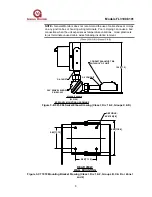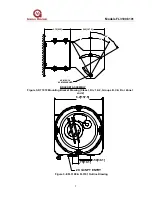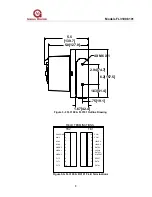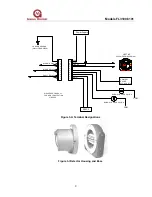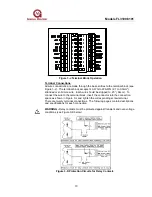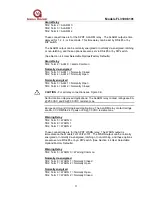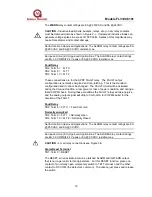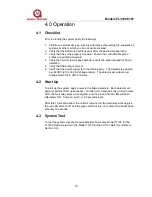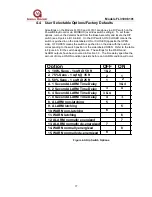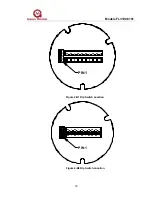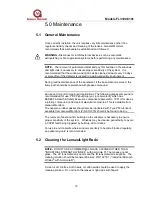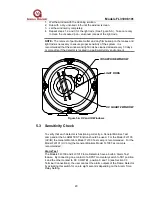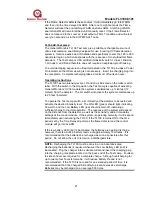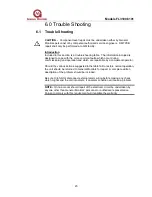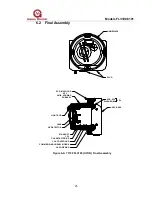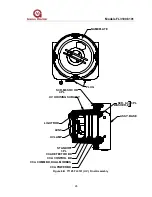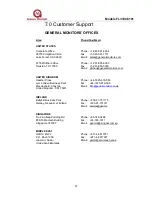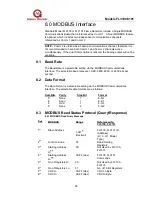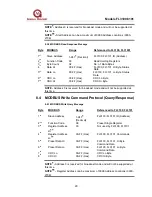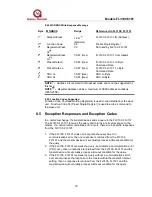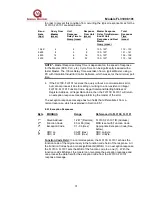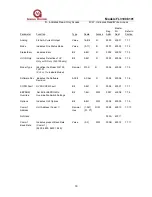
Models FL3100/3101
20
1.
Wet the window with the cleaning solution.
2.
Rub with a dry, unsoiled cloth until the window is clean.
3.
Let the window dry completely.
4.
Repeat steps 1, 2 and 3 for the light rods. (See Figure 5-A). Take care only
to clean the uncoated (non - aluminum) areas of the light rods.
NOTE - The removal of particulate matter and any film buildup on the lenses and
light rods is necessary to ensure proper sensitivity of the system. It is
recommended that the window and light rods be cleaned at least every 30 days
or more often if the detector is located in a particularly dirty environment.
Figure 5-A UV and IR Windows
5.3 Sensitivity
Check
To verify that each detector is functioning correctly, a General Monitors Test
Lamp and/or the ALARM TEST function should be used. For the Model FL3100
(UV/IR) the General Monitors Model TL103 Test Lamp is recommended. For the
Model FL3101 (UV only) the General Monitors Model TL100 Test Lamp is
recommended.
Alarm Test
The Models FL3100 and FL3101 Flame Detectors have a built-in Alarm Test
feature. By connecting one contact of a SPST momentary switch to TB1 position
4 and the other contact to DC COM TB1, position 9 and 10 (see Section 3.3
Terminal Connections), the user can test the alarm outputs of the Flame Detector
by activating this switch for one to eight seconds depending on the Alarm Time
Delay Setting.
IR SAPPHIRE WINDOW
UV QUARTZ WINDOW
LIGHT RODS

